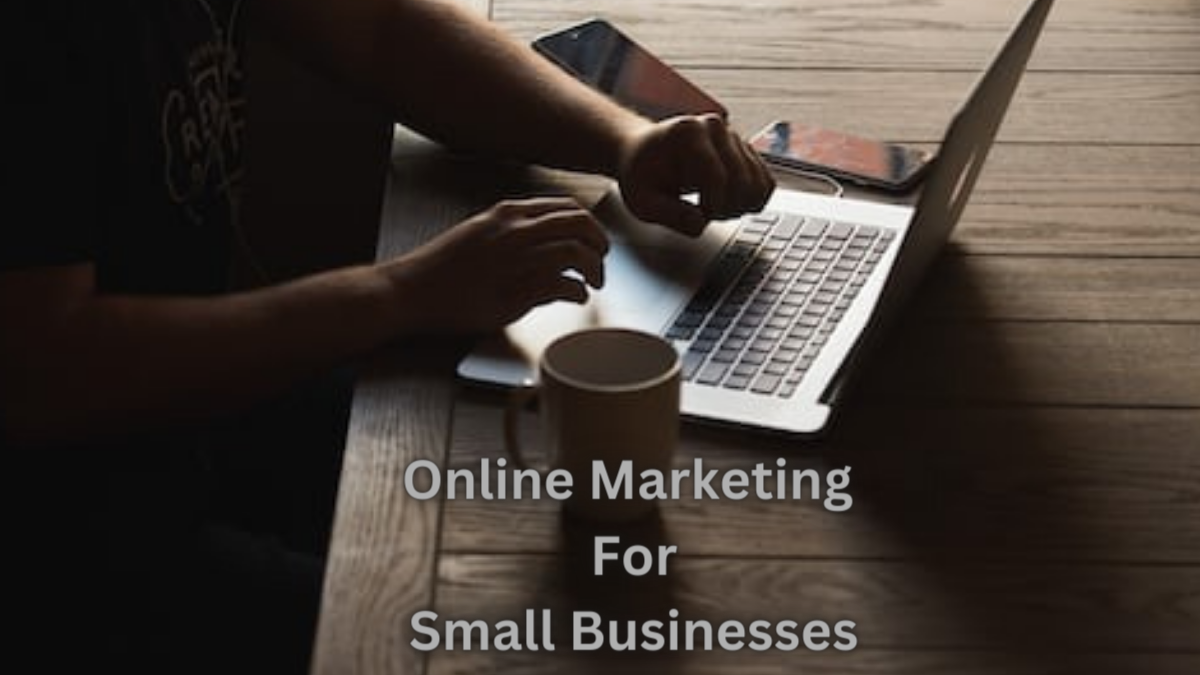Business
Online Marketing Small Businesses: Handling the Digital Environment

Conclusion:
Business
Unlocking Potential: An Extensive Look at Skillsider, Your Ultimate Online Earning Source

People are looking for ways to use their abilities and skills to make money online, and these platforms are always changing. Of all the platforms out there, Skillsider has become one of the most promising for professionals and independent contractors. Skillsider is a name that sticks out in the constantly changing world of online earning platforms. Skillsider is a dynamic network that offers numerous chances for individuals across many industries, catering to the needs of freelancers and professionals seeking new ways to demonstrate their expertise. This post will go into great detail about Skillsider, including its features, earning possibilities, and how to succeed in this ever-changing ecosystem.
What is Skillsider?
One unique online earning platform that links talented people with companies and clients in need of their knowledge is called Skillsider. Established on the tenets of efficiency and teamwork, Skillsider has garnered attention for its intuitive interface and wide array of employment classifications.
Navigating the Crowded Marketplace
Amidst the multitude of freelance platforms, Skillsider stands out for its easy-to-use design, wide range of work categories, and dedication to building a vibrant community. Here, obtaining work is not the only goal; creating relationships and developing a long-term freelance career are also important.
Jobs on Skillsider:
Skillsider caters to a broad spectrum of skills and industries. Whether you’re a graphic designer, writer, programmer, or marketing expert, there are opportunities aplenty. The platform embraces diversity, ensuring that everyone, from creatives to tech enthusiasts, can find projects that match their expertise.
Earning Potential on Skillsider
Various factors, such as the intricacy of projects, the freelancer’s experience, and client happiness, affect the earning potential on Skillsider. Numerous real-world success stories exist, highlighting people who have made Skillsider gigs into reliable sources of income.
How Skillsider Works: A Step-by-Step Guide
1. Registration and Profile Setup
- Embarking on your Skillsider journey begins with a seamless registration process. Learn how to set up an appealing profile that showcases your skills and experiences effectively.
2. Exploring the Interface
- Skillsider’s intuitive interface is designed for efficiency. Discover how to navigate through the dashboard, making the job search and application process a breeze.
3. Types of Jobs on Skillsider
- From creative gigs to technical projects, Skillsider caters to a broad range of skills. Explore the diverse job categories and find where your expertise shines the brightest.
Crafting Your Success Story on Skillsider:
1. Building a Winning Profile
- Your profile is your virtual storefront. Learn strategies to create an eye-catching profile that attracts potential clients and sets you apart from the competition.
2. Showcasing Your Skills
- Skillsider allows you to showcase your talents effectively. Understand how to present your skills in a way that resonates with clients looking for your specific expertise.
3. Navigating the Dashboard Effectively
- The dashboard is your command center. Master the art of efficiently managing your projects, communicating with clients, and tracking your earnings.
Skillsider Community and Support
Skillsider encourages a sense of community among its members in addition to serving as a job marketplace. Peer assistance is available, and freelancers can interact and work together. The portal also offers a wealth of materials and support to help users along their freelance path.
Success Strategies on Skillsider
To succeed on Skillsider, freelancers should go beyond merely completing tasks. Visibility is key, and users can enhance their profiles, secure repeat business, and accumulate positive reviews. This section provides actionable tips to increase success on the platform.
Comparison with Other Platforms
While various online earning platforms exist, Skillsider distinguishes itself through unique features and a commitment to user satisfaction. A comparative analysis highlights the platform’s strengths and why freelancers might choose Skillsider over alternatives.
Freelancer Safety on Skillsider
Addressing concerns about online safety is paramount, and Skillsider prioritizes creating a secure environment for freelancers. This section discusses the measures in place to protect users and foster a trustworthy community.
Skillsider’s Payment System
Understanding the payment process is crucial for freelancers. Skillsider’s transparent payment system, withdrawal options, and frequency of payouts are explained to ensure freelancers feel confident about their earnings.
Updates and Improvements
Staying ahead in the competitive freelance landscape requires continuous improvement. Any recent updates or future enhancements to Skillsider are highlighted, showcasing the platform’s commitment to evolving with the needs of its users.
Common Challenges on Skillsider
Even though Skillsider offers freelancers a friendly workplace, difficulties could still occur. Freelancers can successfully traverse potential difficulties and prosper on the platform by recognising these challenges and providing workable answers.
Conclusion:
To sum up, Skillsider offers a profitable chance for people who want to charge for their expertise. The site stands out in the field of online earning due to its user-friendly interface, variety of work categories, and encouraging community. As you start your Skillsider adventure, don’t forget to highlight your abilities, form deep connections, and seize the opportunities that Skillsider freelancing presents. One thing is evident as we approach the end of our investigation into Skillsider: it’s more than simply a platform; it’s a doorway to countless opportunities. Regardless of your experience level or level of inexperience, Skillsider offers you the blank canvas on which to illustrate your success story. Accept the chances, overcome the obstacles, and let Skillsider be the driving force behind your online income path.
FAQs
1. Is Skillsider suitable for beginners?
Absolutely! Skillsider caters to a wide range of skill levels, making it accessible for beginners and seasoned professionals alike.
2. How does Skillsider ensure payment security?
Skillsider employs a secure payment system, and transactions are conducted with the utmost transparency. Users can choose from various withdrawal options.
3. Can I use Skillsider for full-time freelancing?
Yes, many freelancers have successfully transitioned to full-time work on Skillsider. The platform offers a consistent flow of projects across different industries.
4. Are there any fees associated with using Skillsider?
Skillsider may charge a small service fee on transactions. However, the potential earnings far outweigh these minimal fees.
5. What sets Skillsider apart from other freelance platforms?
Skillsider distinguishes itself through a user-friendly interface, diverse job categories, and a supportive community. Its unique features make it a compelling choice for freelancers.
Business
E-Commerce Website Development in London

E-Commerce Website Development in London: Crafting Digital Storefronts for Success
Introduction:
An e-commerce website is an online platform that facilitates the buying and selling of goods and services over the Internet. The term “e-commerce” stands for electronic commerce, and it involves the exchange of money for products or services through electronic means, primarily the Internet.
Robust e-commerce websites are becoming more and more in demand in London, the vibrant city where business and creativity meet. This piece explores the topic of developing e-commerce websites, with a particular emphasis on London’s distinct environment and the critical factors that companies must take into account. The significance of a well-designed and user-friendly e-commerce website cannot be overemphasized in the fast-paced and fiercely competitive business environment of London. As we come to the end of our investigation of London’s e-commerce website development landscape, it is clear that companies doing business there must embrace digital transformation in order to remain competitive.
The London Advantage:
London’s e-commerce scene is not just bustling; it’s a dynamic arena where businesses face both challenges and opportunities. Crafting a distinct digital presence isn’t just a trend but a strategic move to succeed in this highly competitive market.
Thriving E-Commerce Scene
London boasts a vibrant and competitive e-commerce scene, with businesses vying for online visibility. Crafting a distinct digital presence is not just a choice but a necessity for success in this dynamic market.
Tech-Savvy Consumer Base
The London consumer base is known for its tech-savvy nature. A well-designed and user-friendly e-commerce website is crucial to capturing the attention and loyalty of these discerning customers.
-
Meeting the Expectations of Tech-Savvy Consumers
The consumers in London are known for their tech-savvy nature. Hence, a responsive and user-friendly e-commerce website is not just a luxury but a necessity. To capture the attention and loyalty of discerning London customers, businesses must prioritize seamless digital experiences.
Key Elements of E-Commerce Website Development:
From responsive design and intuitive navigation to secure payment gateways and high-quality visuals, every element in e-commerce website development plays a pivotal role. The success of an online store in London hinges on meeting these fundamental expectations of customers.
Responsive Design
Ensuring that the e-commerce website is responsive across various devices is paramount. A seamless experience on desktops, tablets, and mobiles is vital for customer engagement.
User-Friendly Navigation
Intuitive navigation is the backbone of a successful e-commerce website. Visitors should easily find products, navigate through categories, and proceed to checkout without unnecessary complications.
Secure Payment Gateways
Londoners prioritize security, especially when it comes to online transactions. Implementing robust and secure payment gateways is non-negotiable for building trust and credibility.
High-Quality Visuals
In the world of e-commerce, visuals speak louder than words. High-quality images and compelling product visuals enhance the overall shopping experience and drive conversions.
Search Engine Optimization (SEO)
Optimizing the website for search engines is crucial for visibility. London businesses must invest in SEO strategies to rank higher on search engine results pages and attract organic traffic.
Integration with Social Media
London’s social media-savvy population emphasizes the importance of integrating e-commerce websites with popular platforms. Seamless sharing options and social media engagement can significantly boost brand visibility.
E-Commerce Trends in London:
Adapting to E-Commerce Trends
Londoners appreciate personalized shopping experiences, and businesses need to leverage AI-driven recommendations to enhance customer satisfaction. Embracing sustainable practices and incorporating AR into the shopping journey are not just trends but essential components of staying relevant in the London market.
Personalized Shopping Experiences
Londoners appreciate personalized experiences. Implementing AI-driven recommendations and personalized content enhances the user journey, leading to higher customer satisfaction and repeat business.
Sustainable Practices
Londoners are increasingly conscious of sustainability. E-commerce websites embracing eco-friendly practices and showcasing sustainable products gain favor among environmentally conscious consumers.
Augmented Reality (AR) Integration
Incorporating AR into the e-commerce experience allows customers to visualize products before purchasing. This trend is gaining traction in London, offering an innovative and immersive shopping experience.
Choosing the Right E-Commerce Development Partner:
Local Expertise
Opting for a development partner with local expertise provides insights into the specific needs and preferences of the London market.
Portfolio and Reviews
Reviewing the portfolio and client testimonials helps gauge the capabilities and reliability of the e-commerce development agency. Successful projects and positive feedback are indicative of a trustworthy partner.
Customization Capabilities
Every business in London is unique, and their e-commerce website should reflect that. Choosing a development partner with strong customization capabilities ensures the website aligns with the brand’s identity and goals.
Conclusion:
The Game-Changer
In conclusion, an exceptional e-commerce website is more than just a digital storefront; it’s a game-changer. Whether it’s the seamless user experience, the incorporation of cutting-edge technologies, or the reflection of the brand’s identity, a well-developed e-commerce website is a strategic investment for success in London’s business landscape.
As businesses embark on their digital journey, understanding the nuances of the London market and adapting to the ever-evolving e-commerce trends will be the keys to not only surviving but also thriving in this dynamic ecosystem.
FAQs:
- How long does it take to develop an e-commerce website in London? The timeline for e-commerce website development varies based on the complexity of the project. On average, it can take anywhere from a few weeks to several months.
- Do I need to invest in ongoing maintenance for my e-commerce website? Yes, regular maintenance is crucial to ensure the website’s optimal performance and security and to incorporate any necessary updates or enhancements.
- Can I update product information on my e-commerce website easily? Yes, a user-friendly Content Management System (CMS) allows easy updates to product information, ensuring your online store stays current and relevant.
- How can I ensure the security of customer data on my e-commerce website? Implementing SSL certificates, using secure payment gateways, and regularly updating security protocols are essential measures to safeguard customer data.
- Is it necessary to have a mobile app along with an e-commerce website? While a mobile app can enhance the overall customer experience, having a responsive and mobile-friendly website is a must. The decision to invest in a mobile app depends on the specific goals and preferences of the business.
Business
Affiliate Marketing: An Explained Look

Affiliate Marketing: Your Gateway to Passive Income
Affiliate marketing is a dynamic and lucrative online business model that enables individuals or businesses (affiliates) to earn commissions by promoting the products or services of other companies (merchants). This collaborative arrangement benefits all parties involved—merchants increase sales, affiliates earn commissions, and consumers discover valuable products. Let’s delve into the key components of affiliate marketing to understand how this digital partnership operates.
Affiliate Marketing:
Affiliate marketing is a type of performance-based marketing where businesses reward individuals or other businesses (affiliates) for driving traffic to the business’s products or services and generating sales or leads. Affiliates earn a commission for each successful referral they make through their marketing efforts. This marketing strategy is prevalent in the online space and involves a partnership between the business and the affiliate to mutually benefit from increased sales and exposure.
Parties Involved: The Trio of Affiliates, Merchants, and Consumers
Business:
It expands the reach of the business without incurring upfront marketing costs. The business only pays for actual sales or leads generated by the affiliate’s efforts.
i. Affiliates:
- Individuals or entities that sign up for affiliate programs to promote products or services.
- Affiliates earn commissions for driving desired actions, such as sales, leads, or clicks.
- Affiliates can monetize their online presence by promoting products or services they believe in. They earn a commission for every successful referral, making it a potential source of passive income.
ii. Merchants (advertisers):
- Companies that offer products or services and seek to increase their online presence and sales.
- Merchants set up affiliate programs, providing affiliates with unique tracking links.
iii. Consumers:
- end-users who click on affiliate links and potentially make purchases or perform desired actions.
- Consumers benefit from discovering products or services recommended by affiliates.
The Affiliate Journey: How It Works
The affiliate marketing journey typically involves several key steps:
1. Affiliate Sign-up:
-
- The process starts when people or companies (affiliates) register for a company’s affiliate programme.
2. Program Approval:
-
- After signing up, affiliates may need to go through an approval process by the company managing the affiliate program. This ensures that the affiliate is a good fit and complies with the company’s terms and conditions.
3. Receiving Affiliate Links or IDs:
-
- Once approved, affiliates receive unique tracking links, or IDs. When individuals or businesses (affiliates) sign up for a company’s affiliate program, the procedure begins.
4. Promotion:
-
- Affiliates promote the company’s products or services through various marketing channels. This can include their website, blog, social media, email newsletters, or other online platforms.
5. Tracking and Analytics:
-
- The unique affiliate links or IDs include tracking mechanisms, such as cookies or pixels, that allow the company to monitor the performance of each affiliate. This tracking helps attribute sales or leads to specific affiliates.
6. Visitor Actions:
-
- When visitors click on the affiliate’s links and perform a desired action, such as making a purchase or filling out a form, the tracking system records these actions.
7. Commission Earnings:
-
- Affiliates earn a commission based on the agreed-upon terms of the affiliate program. Commissions are typically a percentage of the sale or a fixed amount for each lead or action.
8. Payment:
-
- Affiliates receive payments for the commissions they’ve earned. Payment frequency and methods vary depending on the affiliate program, with some paying monthly, bimonthly, or on a different schedule.
9. Monitoring and Optimization:
-
- Both the company and affiliates continually monitor the performance of the affiliate marketing efforts. This includes analyzing which strategies are most effective, optimizing campaigns, and adjusting marketing tactics to improve results.
The affiliate marketing journey is a cyclical process where affiliates continue to promote products or services, track performance, and earn commissions based on their successful referrals. This model allows businesses to expand their reach and sales without incurring upfront marketing costs, while affiliates have the opportunity to monetize their online presence and earn income through commissions.
Types of Affiliate Marketing: Diverse Models for Success
Affiliate marketing can take various forms, and there are several types based on the relationship between the affiliates and the products or services they promote. Here are some common types of affiliate marketing:
1. Pay-Per-Sale (PPS):
- This is the most common type of affiliate marketing. Affiliates earn a commission when the referred customer makes a purchase. The commission is usually a percentage of the sale.
2. Pay-Per-Click (PPC):
- Affiliates earn a commission based on the number of clicks generated by their referrals, regardless of whether the referred visitors make a purchase or not. This model focuses on driving traffic to the merchant’s site.
3. Pay-Per-Lead (PPL):
- Affiliates earn a commission when their referral takes a specific action, such as signing up for a trial, filling out a form, or providing contact information. This type is common in industries where direct sales may not be the primary goal.
4. Pay-Per-Call:
- Similar to PPL, affiliates earn a commission for each phone call generated through their marketing efforts. This is often used in industries where a phone call is a valuable lead.
5. Two-Tier Affiliate Marketing:
- In this model, affiliates earn a commission not only for the sales or leads they generate but also for the affiliates they refer to the program. It creates a multi-level structure where affiliates can earn from their direct referrals’ efforts.
6. Multi-Level Marketing (MLM):
- Also known as network marketing or pyramid selling, MLM involves a hierarchical structure of affiliates, where each affiliate recruits new members and commissions are earned on multiple levels.
7. Loyalty or Cashback Affiliates:
- Affiliates in this category focus on promoting products or services to their audience by offering cashback, discounts, or loyalty points. Users are incentivized to make purchases through their affiliate links to receive these benefits.
8. Content Affiliate Marketing:
- Content creators, such as bloggers, YouTubers, or podcasters, create content around a niche and include affiliate links within their content. They earn commissions when their audience makes a purchase through these links.
9. Coupon or Deal Affiliates:
- Affiliates who specialize in promoting discounts, coupons, or special deals. Users are attracted to these offers, and the affiliate earns a commission for each sale made using their unique promotional codes or links.
10. Email Marketing Affiliate:
- Affiliates build email lists and promote products or services to their subscribers. They earn commissions for sales generated through their email campaigns.
These types of affiliate marketing provide flexibility for both businesses and affiliates to choose the model that aligns with their goals and target audience. The effectiveness of each type depends on factors such as the nature of the product or service, the target audience, and the marketing strategy employed by the affiliates.
Affiliate Marketing Tools and Resources: Maximizing Success
Affiliate Networks:
- Platforms that connect affiliates with a wide range of merchants.
- Offer centralized tracking, reporting, and payment systems.
Promotional Materials:
- Merchants provide affiliates with banners, text links, and other promotional materials.
- High-quality, engaging content enhances the likelihood of conversions.
Cookies and Tracking Technology:
- Cookies track user interactions, attributing conversions to the correct affiliate.
- Understanding cookie duration is crucial, as it influences commission attribution.
Challenges and Opportunities: Navigating the Landscape
Competition:
- The popularity of affiliate marketing means increased competition.
- Niche selection, targeted marketing, and value-added content help affiliates stand out.
Building Trust:
- Affiliates need to build trust with their audience to maintain credibility.
- Transparent and honest promotion fosters trust and enhances long-term success.

Conclusion: A Gateway to Passive Income
Affiliate marketing serves as a powerful avenue for individuals and businesses to generate passive income by leveraging their online presence. Successful affiliates blend effective marketing strategies with authenticity, providing value to both merchants and consumers. As the digital landscape continues to evolve, affiliate marketing remains a dynamic and accessible means for enterprising individuals to monetize their online efforts.
FAQs:
1. What is affiliate marketing?
Affiliate marketing is a performance-based marketing strategy where businesses reward affiliates (individuals or other businesses) for driving traffic or sales to the business’s products or services through the affiliate’s marketing efforts.
2. How do affiliates earn money in affiliate marketing?
Affiliates earn money through commissions. They receive a percentage of the sale, or a fixed amount, for each lead or action generated through their unique affiliate links or codes.
3. How do I become an affiliate marketer?
To become an affiliate marketer, you can sign up for affiliate programs offered by businesses. Once approved, you’ll receive unique affiliate links or codes that you can use to promote the products or services.
4. Are there any costs to joining an affiliate program?
In most cases, joining an affiliate program is free. Businesses provide affiliates with the necessary tools and tracking resources at no cost. Be cautious of programs that require upfront fees.
5. How are affiliate sales tracked?
Affiliate sales are tracked through unique identifiers such as cookies, tracking pixels, or other tracking mechanisms. These identify the source of the referral and ensure affiliates receive proper credit for their efforts.
6. What types of products or services can I promote as an affiliate marketer?
Affiliate marketers can promote a wide range of products and services, including physical goods, digital products, online courses, subscription services, and more. It depends on the affiliate program and the industry.
-

 Health8 months ago
Health8 months agoHealth Content on theapknews.shop: Keeping Readers Informed and Healthy
-

 How To7 months ago
How To7 months agoExploring How Geospatial Technologies Illuminate Our World
-

 Pets8 months ago
Pets8 months agoUncovering the Jovial Internet Expression “What the Heckin’ Dog”
-

 Health8 months ago
Health8 months agofuture health software could change healthcare(An Overview)
-

 Technology8 months ago
Technology8 months agoCraft Design Technology
-

 Technology7 months ago
Technology7 months agoAmerican Made Streaming: Exploring Entertainment Options
-

 News8 months ago
News8 months agoShedding light on the History of Ertugrul Ghazi
-

 Technology7 months ago
Technology7 months agoRevealing the Geekzilla.tech Marvels: Honour Magic5 Pro














